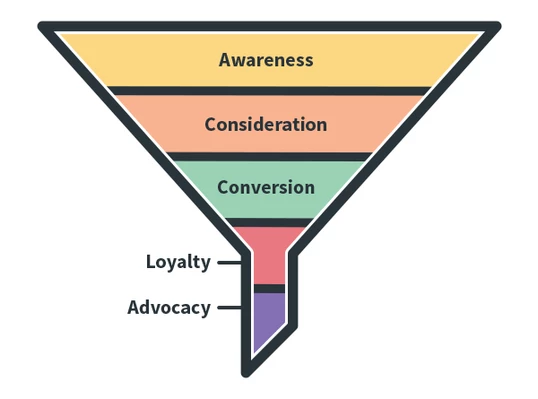In today’s Digital age, the Mar-tech (Marketing Technology) tools and suites are evolving at a rapid pace. Especially in the space of managing Digital/online content, the lines are getting blurred between Content Management System (CMS) platform and a true e-Commerce platform. In this article, I’d like to explore and compare these two platforms side by side to better understand how businesses can efficiently leverage of these opportunities.
CMS – Content is king
CMS or Content Management Systems are a set of tools to ‘develop’ websites (e.g. website contents) quickly and easily. CMS systems often offer existing content templates, themes/styling, and menus/navigations to arrange and create sites quickly in a clean and organized way.
Often they come with third-party applications/plug-ins to extend their existing feature and, hence, the effectiveness of the end product, the website itself. The vast majority of plugins have a free and premium paid version available to CMS users, depending on the CMS vendors.

eCommerce platform, much more than just a CMS
In layman’s terms, eCommerce system are platforms that allow you to create virtual stores and start selling products or services online. The platform does have ability to create and manage contents as well, however, more importantly the platform is better suited in its main scenario, selling stuffs. A typical eCommerce platform will enable you to manage/upload products information and content, set/monitor its inventory manually, and set delivery and payment methods. From here on, whenever a customer places an order online, the system will automatically notify the administrator by email about the sale made and the payment status.
The fancier it gets, the more eCommerce platforms allow you to do:
- Load products with variances and have different categories and prices of the product variances.
- Bulk buying/quantity discount when buying large numbers of product quantity.
- Advanced segments/products filtering capability and comparison tools.
- Campaign and promotion management e.g. through coupon codes offerings.
- Integration with popular payment gateway, such as Paypal or any provider.
- Integration with third-party delivery companies to manage and track shipments and automated shipping notices.
In short, the system allows you to follow and fine tune almost every aspect of a typical customer online journey through the sales funnel, and gives you the ability to manage the online store from an operation point of view.
Common characteristics between the two.
Both systems allow us to handle various aspects of online business; however they each have their similarities and differences.
- Ease of use The first similarity is the convenience and much improvement in the ease of use. Both have gone a long way since the early days of Internet boom and now allow a very intuitive user interface to be able to setup, manage, and run websites, suitable for almost anyone without having advanced understanding of computers (or any degree/background in Information Technology).
- Operational Maintenance Another point to take home is both these systems are not set and forget. Both require resources for day-to-day running of the systems. The more serious a company gets and the more mature they are in their digital journey and implementation, considerable efforts need to be made in terms of allocating human resources and capital investment (hosting, licensing cost, etc.) to keep up-to-date with the latest technology improvements on these platforms.
- Proliferation of vendors and third-party plugins. Another similarity of both is that they have lots of third-party software/plug-ins to extend and improve their offerings and capabilities. To name a few: social media integration/marketing, campaign/email marketing automation, lead/opportunities/customers relationship management, search engine optimization (SEO) tools, marketplace integration, product reviews, analytics capability, and personalization. The list is endless and growing exponentially as we speak. The challenge and opportunities for both are the same, how do you choose what’s relevant for you? What suits you best for your current situation and going forward? How do you ensure you make full use of these tools? Choose smartly and you’ll be rewarded handsomely.
Major differences between the two:
- Strategy and Road map: The main vision and strategy of a CMS system is often dictated from ‘brands/contents’ owners point of view, so typically the main focus is ‘outward looking’, the customers, the contents, the brand and image of the company to the outside world. eCommerce system on the other hand requires lots of attentions on ‘internal systems’ and ‘business processes’. For example: product information, pricing, inventory, order fulfillment, and ultimately payment are heavily relevant topics that often dictates and impacts overall eCommerce strategy and roadmap.
- Skillset The differences of these two platforms also impacts on the different resource skillsets that they will naturally progress/differentiate throughout course of time as both systems and human resources capability evolve. A typical CMS user often deals with front-end customer-facing experience, which translates into ensuring not only relevant content for the audience, but also overall great easy-to-use and intuitive ‘user interface’ designs. An eCommerce system user, on the other hand, operates more with the ‘sales/profits’ and ‘business process’ thinking head on. Which digital channels are my potential buyers in (e.g. own website, partners/distributors/retailers, marketplace, social)? How do I ensure they will buy my products/services? Are my products priced correctly against other competitors in these digital channels? Which products/services are most profitable? How do I ensure my overall order fulfillment process is able to meet customers’ demands and expectations?
- Metrics/data points One field that offers unique competitive advantage these days are ‘data’. In the field of analytics, the challenges are no longer on acquiring these data, but rather on exposing them, turning them into valuable information and actionable insights. CMS and eCommerce, due to the nature of their initial intent, focus on different metrics. CMS often captures/offers capability in the early phase of a Marketing funnel (e.g. Awareness and Consideration phase), focusing on new leads/opportunities and converting them into customers. Example: email marketing click through rate, newsletter subscription, social media reach/impression, customer persona scoring. eCommerce metrics, arguably, is skewed towards the other end of the Marketing funnel (e.g. Conversion, Loyalty, Advocacy phase), focusing on the actual sales transaction and improving, nurturing the customers to spend more and become more loyal to the brand. Example: shopping cart conversion rate, cart abandonment, size of baskets analysis, cross-sale/up-sale opportunities. As you can tell, these metrics offer different angle of looking and interpreting data.

Conclusion
In conclusion, both platforms are powerful tools that are growing at unprecedented pace, offering opportunities and challenges for the setup, management, and up scaling of virtual businesses. Which tools/vendors you will ultimately need, depends a lot on what your business requirements are, future needs, overall strategy and roadmap. In my future articles, I will explore and map out other existing tools and technologies in this Martech space.
Comments